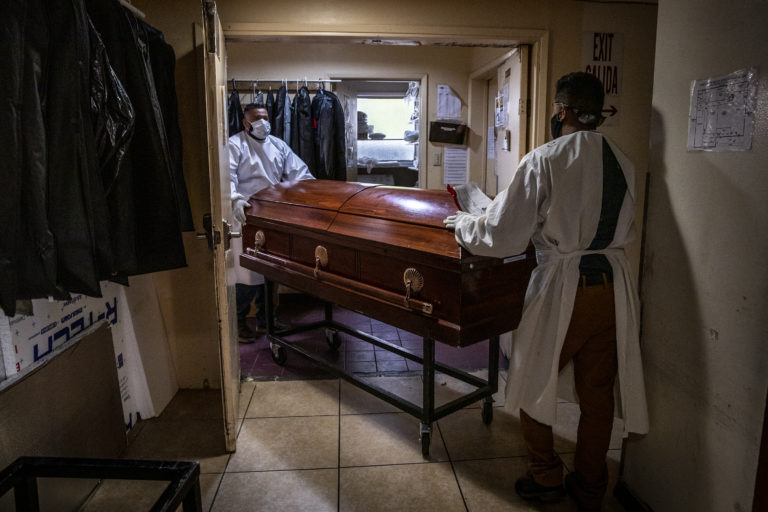Losing a loved one is never easy, and when it happens in a hospital, the experience can feel even more overwhelming. Alongside the emotional toll of grief, there are also many practical matters that need to be addressed. In Singapore, most people are unfamiliar with what actually happens behind the scenes after someone passes away in a hospital setting.
At Singapore General Hospital (SGH), which is the oldest and largest hospital in the country, there is a specific process in place for handling deaths. SGH has its own mortuary facility that manages cases where further examination is required, or where the Coroner needs to determine the cause of death. This is especially relevant in sudden or unexpected deaths.
Understanding how the SGH mortuary works and what steps are involved after a hospital death can help families make clearer decisions during a difficult time. This article serves as a practical guide to walk you through each stage, from the moment death is certified to the eventual funeral arrangements. Whether you are facing this situation now or planning ahead, having this knowledge can offer some peace of mind.
Immediate Steps After a Hospital Death
When a person passes away in a hospital in Singapore, the process begins with the attending doctor certifying the death. This includes confirming the time of death and issuing a Certificate of Cause of Death (CCOD), provided the cause is clear and there are no suspicious circumstances. The hospital staff will then inform the next-of-kin and offer guidance on the steps to take.
If the death is considered natural, meaning it was expected or due to known medical conditions, the family may proceed with funeral arrangements shortly after receiving the CCOD. However, in cases where the cause of death is unclear, sudden, or falls under certain categories like accidents, suicides, or deaths within 24 hours of hospital admission, the case must be referred to the police and the Coroner. These are considered reportable or unnatural deaths.
At this stage, hospital staff will typically provide a checklist to help the family understand what comes next. They may also advise the family to contact a licensed funeral director, who can assist with logistics such as body collection, booking of cremation or burial services, and coordination with the relevant authorities.
The immediate hours after a hospital death are often filled with confusion and grief, but the procedures in place are meant to ensure proper handling and legal clarity. Knowing the difference between a natural and reportable death helps families prepare for the steps that follow.
When the Case Is Natural: Hospital Release Process
If the death is classified as natural, meaning it was due to known medical conditions and no further investigation is required, the process is generally straightforward. After the Certificate of Cause of Death (CCOD) is issued by the hospital doctor, the family can proceed with making funeral arrangements.
In most hospitals, including Singapore General Hospital (SGH), the body may be held temporarily in the hospital’s mortuary or holding area. Families are advised to engage a licensed funeral director as soon as possible. The funeral director will handle the collection of the body, transport it to the funeral parlour, and begin preparations for the wake and funeral.
To authorise the release of the body, the next-of-kin or appointed representative will need to provide the following documents:
- The original CCOD
- The deceased’s NRIC
- The claimant’s NRIC
- A completed authorisation form from the funeral director (if applicable)
Once these documents are submitted and verified, the hospital will arrange for the release. This can usually be done within a few hours, though it may take longer if the death occurs late at night or on weekends.
Most natural death cases are resolved within 12 to 24 hours, giving families enough time to organise the wake, cremation, or burial according to their customs. At this point, the SGH mortuary does not get involved unless the case is reclassified or additional procedures are required.
When the Case Is Unnatural: Body Sent to SGH Mortuary
In Singapore, not all deaths can be immediately certified by a hospital doctor. If the cause of death is unclear, sudden, or falls into specific categories, it is considered unnatural. These include cases of accidents, suicides, suspected foul play, or deaths that occur within 24 hours of hospital admission without a clear medical history.
When a death is classified as unnatural, the hospital will refer the case to the police. The police will then notify the State Coroner, who has the legal authority to order a post-mortem investigation. In these situations, the body is transferred to the SGH Mortuary for further examination.
The SGH Mortuary, located within the Singapore General Hospital campus, is where all Coroner’s cases in the central region are handled. It serves not only SGH but also other hospitals, police departments, and government agencies when necessary.
Upon arrival at the mortuary, the deceased is registered, and a forensic pathologist may conduct a post-mortem examination to determine the cause of death. This process is usually completed within one working day, although more complex cases may take longer.
During this time, families may be contacted to assist with identification. They will be advised on when and how to visit the mortuary, what documents to bring, and what to expect during the process. Funeral arrangements cannot proceed until the Coroner has completed the investigation and issued a permit to release the body.
Although the wait can be emotionally difficult, the process is essential for legal and public health reasons. Once clearance is granted, the funeral director may collect the body, and the family can proceed with final rites.
Post-Mortem Appearance: The Role of Mortuary Make-Up Artists
In some cases, especially after a post-mortem or traumatic death, the body may need restoration before the wake. This is where mortuary make-up artists in Singapore come in.
These professionals specialise in post-mortem grooming, helping the deceased appear as natural and peaceful as possible. Services may include cosmetic touch-ups, hairstyling, dressing, and even facial reconstruction if needed. This work is usually arranged through the funeral director and is not part of the hospital’s responsibilities.
Families often choose this service to ensure a respectful final presentation during the wake, especially for open-casket funerals. It is a way to honour the memory of the deceased and provide some comfort to grieving loved ones.
Claiming the Body and Next Steps
Once the Coroner has completed the investigation and authorised the release, the body can be claimed from the SGH Mortuary. The family or funeral director will be notified when collection is allowed.
To claim the body, the following documents are typically required:
- Certificate of Cause of Death (if already issued)
- Permit to Bury or Cremate (provided after Coroner clearance)
- NRICs of both the deceased and the claimant
The funeral director will manage the collection and transport of the body to the wake venue or embalming facility, depending on the family’s plans. Most funeral directors in Singapore are familiar with the SGH process and can handle the logistics smoothly.
This stage marks the transition from hospital and legal procedures to the personal and cultural aspects of the funeral. With the formalities complete, families can begin focusing on honouring the life of their loved one.
Planning the Funeral After Hospital Death
With the body released, the family can move forward with funeral arrangements. In Singapore, the two main options are burial and cremation, with cremation being more common due to limited land space.
Cremation slots can be booked at government facilities like Mandai Crematorium and Columbarium, which is the most widely used. This is usually arranged by the funeral director, who will also help with transport, casket selection, setup for the wake, and coordination of religious rites.
Funeral customs vary based on the deceased’s religion and cultural background. Buddhist and Taoist funerals may involve multiple days of chanting and offerings, while Christian and Catholic services are often held in churches or funeral parlours. There are also non-religious options for families who prefer a simpler approach.
A good funeral director will take care of the administrative work, such as submitting the necessary permits, placing obituary notices, and booking the wake venue. They can also assist with sourcing a mortuary make-up artist, if not already arranged.
While the period after a death is never easy, having professional support can help families manage the practical side of things so they can focus on grieving and remembering their loved one.
Conclusion
When a death occurs in a hospital, it can feel like everything happens at once. Between medical procedures, paperwork, and emotional stress, it is easy to feel overwhelmed. Understanding what happens next, especially when SGH Mortuary is involved, can help ease that burden.
Whether the death is classified as natural or requires investigation, there are clear steps in place to guide families through the process. From medical certification to body collection and final arrangements, Singapore’s hospital and mortuary systems are structured to be thorough, respectful, and efficient.
Although no one likes to think about these situations until they happen, being informed allows families to respond with greater clarity during a difficult time. Working with a trusted funeral director can help manage the logistics and ensure that your loved one is treated with care and dignity from start to finish.




